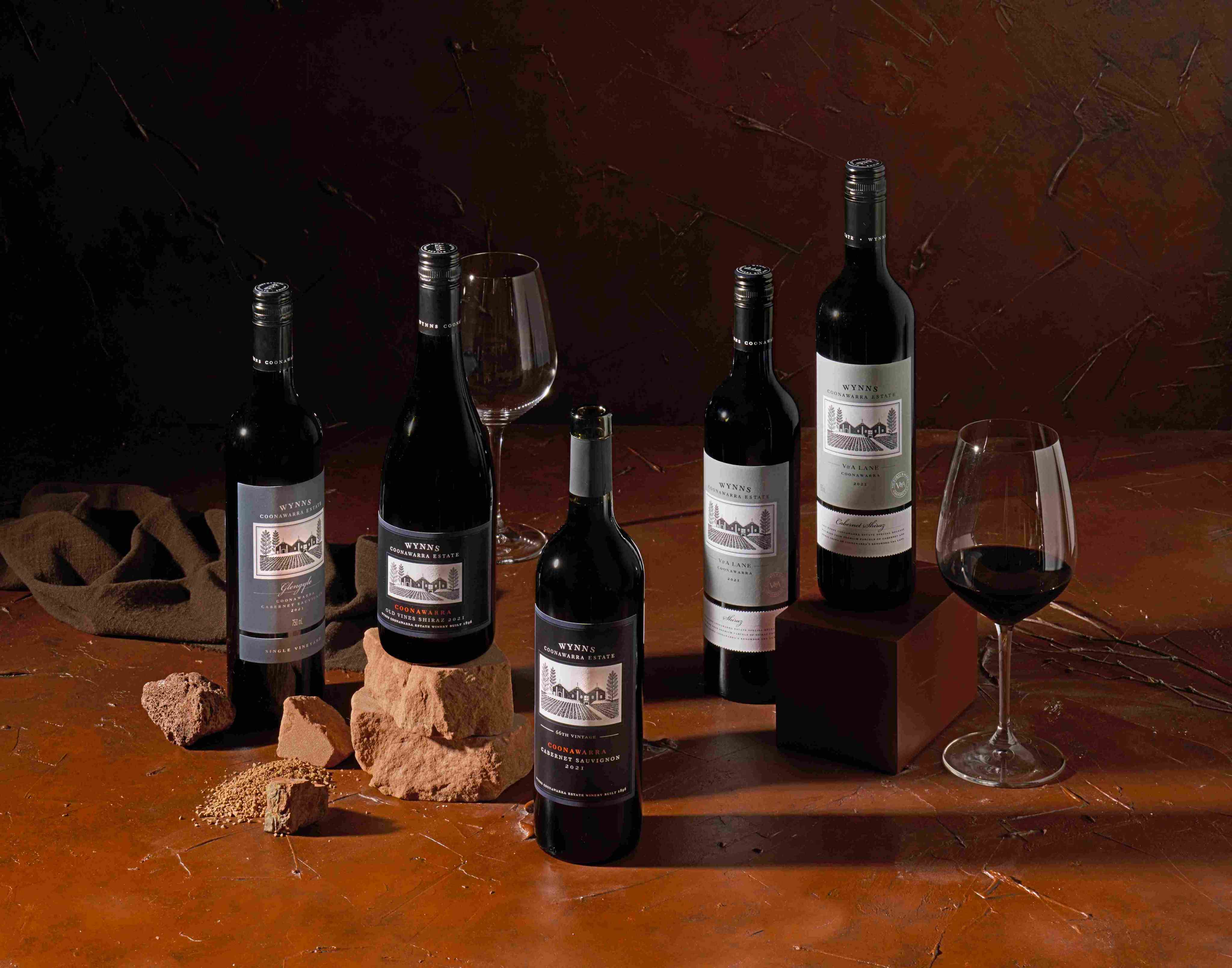From a narrow strip just 12km long and 1km wide comes some of Australia’s - and the world’s - best red wines. Here’s why Coonawarra’s juicy exports are perfect for leisurely sipping.

You may be forgiven for associating Cabernet Sauvignon with standout regions like Napa Valley and Bordeaux, but if you’ve been overlooking South Australia’s Coonawarra region for this popular grape variety, it’s time to take notice. Earlier this year, the 2021 The Pastorialist Cabernet Sauvignon from Riddoch Coonawarra was named the best in the world at the International Wine Challenge, beating out 6,000 entries from 52 wine-producing countries. The judges characterized the vintage as having a “classic” profile, featuring notes of blackcurrant, mint, and herbal cassis, while also noting its enduring fruitiness and crisp, refreshing finish.
A lot of a wine’s character comes from its terroir, and much of the Coonawarra region is blessed with “terra rossa” soil, or “red earth” in Italian, a clay-rich soil that is predominantly found in Mediterranean climates. With good draining and a fertile chemical composition, the reddish soil was found to be ideal for agriculture and viticulture, which is what prompted landowner and politician John Riddoch to plant the region’s first vines in the late 1800s.

Coonawarra also enjoys a much more moderate climate than many South Australian wine regions. “The cooler nights and warm days of Coonawarra provide wine that still has intensity of flavors while exhibiting amazing spice and mint notes,” shares Anthony McConnel, co-founder of Indigo Wine Co, a specialist Australian and New Zealand wine merchant in Singapore.
While terra rossa is the region’s signature soil, black and brown rendzina clays and sandy loams can also be found there. “Black soils hold more moisture, so the vines grow differently,” explains Sue Hodder, Senior Winemaker at Wynns Coonawarra. “But terra rossa soil gives us medium-bodied wines with red fruit flavours and a fresher style.”

Hodder was recently in Singapore to promote Wynns’ latest Wynnsday Collection for 2023, comprising five red wines from the 2021 vintage: The Black Label Cabernet Sauvignon 2021, the Black Label “Old Vines” Shiraz 2021, Glengyle Single Vineyard Cabernet Sauvignon 2021, V&A Lane Shiraz 2021, and Wynns V&A Lane Cabernet Shiraz 2021. “It was a year where everything was so even,” says Hodder of the vintage. “We had a warm and dry spring followed by a wet summer, and a ripening period that wasn’t too hot.” They’re ready to drink now if you favor dominant fruit flavors, but Hodder suggests cellaring extra bottles for eight to 12 years to see if other flavors develop.
Coonawarra and Bordeaux may share similar climates and a penchant for Cabernet Sauvignon, but the difference in soil is what sets their wines apart. “I love drinking Bordeaux, but our wines have this fresh, cherry character to them that we generally don’t see in Bordeaux as much,” continues Hodder. “The hallmarks of a good Coonawarra wine are its clearly defined fruit flavors, a bit of meat, and a lot of freshness.”

McConnel agrees: “Coonawarra wines have a greater depth of color, cassis-sweet aromas and fruit flavors, and an overall generosity and weight on the palate that comes from New World wines.” Even the French have become enamored with the region’s vino. In 2020, Wynn’s top wine, the John Riddoch Cabernet, became one of the first Australian wines to be selected for distribution in the legendary Bordeaux network La Place (the other being The Armagh Shiraz from the Barossa Valley’s Jim Barry winery).
Even with its growing prestige and recognition, the Coonawarra community remains tight knit. “We can be competitive at times since we’re such a small region, but probably not as much as it can get between other regions and styles,” Hodder muses. “There are only about 58 people in my town, and because we all have to live together, we’re all friends. Sometimes we say we’re living in one another’s pockets!”